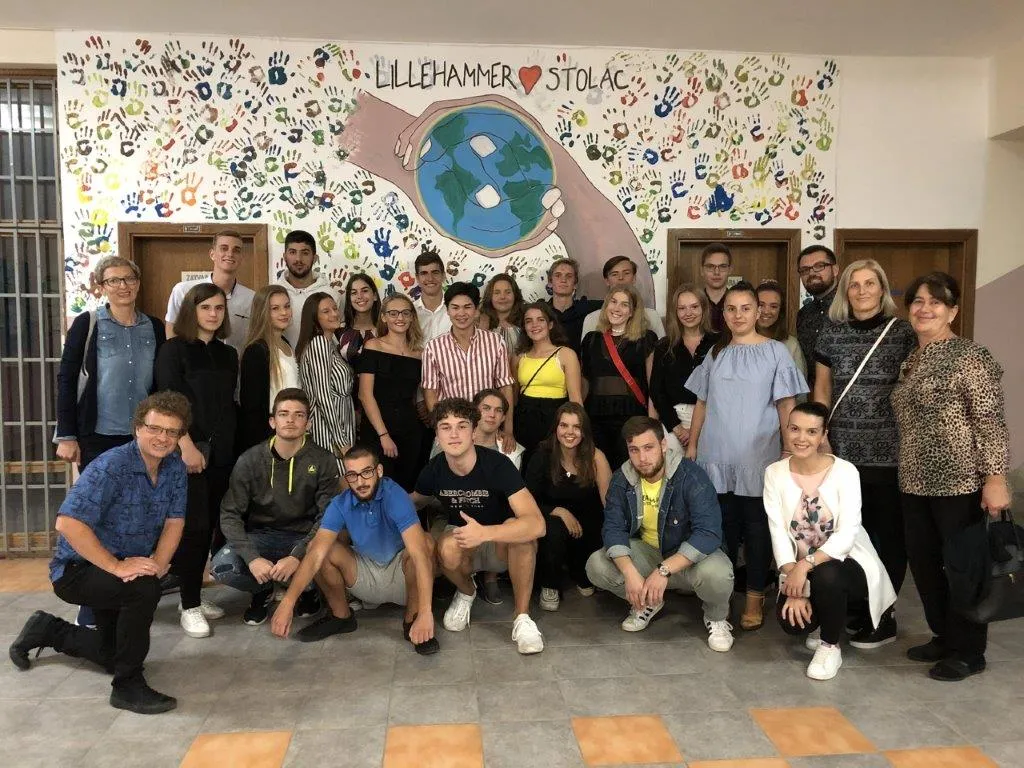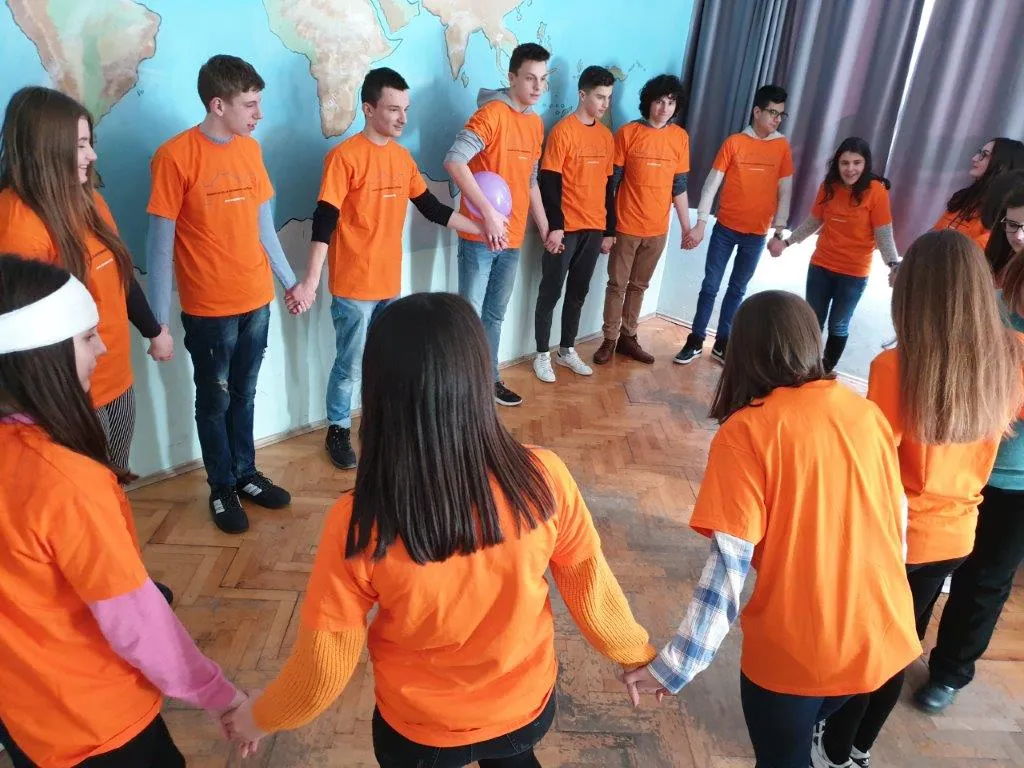An NGO in Bosnia and Herzegovina Circumvents a Discriminatory School System
When Huso Razic and his fellow teachers took a dozen of their students on an exchange to Lillehammer, Norway, in 2012, they worried the trip would turn into a disaster.
On the way to the airport, the students divided themselves into two groups, Croats and Bosniaks, and sat apart on the bus, not exchanging a single word. When they arrived, a similar scene was set: each group mingling with only themselves, in different sections of the airport.
It was the students’ first time boarding an airplane. Razic gave them an idea of what to expect in order to calm their nerves, but the flight ran into turbulence, upsetting them.
When they finally landed in Oslo, all of the students burst into cheers, with some even kissing the ground. Suddenly, they stopped paying attention to who belonged to which group and started hugging and chatting with each other. For the whole two-hour ride on the train to Lillehammer, they talked about how they had survived the flight.
Relations between the groups at Razic’s school in Mostar, a city in southern Bosnia and Herzegovina, were not always as friendly.
His school adheres to the “two schools under one roof” system, in which students from different ethnic groups—in this case Croats and Bosniaks—attend the same school in different “shifts” and are taught different curricula by different teachers.
About 10 years ago, the school, at which Razic is now deputy director, was known in Bosnia and Herzegovina national media as a negative example of the “two schools under one roof” system.
“Back then, students from different backgrounds were very violent toward each other,” Razic recalls. “They would tease each other with religious or nationalistic signs. At some time, the school even had a one-hour gap between shifts so the students wouldn’t meet.”
Initiated by an educational program at the Nansen Academy in Lillehammer in 2001, the Nansen Dialogue Center (NDC) in Mostar set out to change this and reduce the segregation of students.
“A Big Problem for Reconciliation”
After the war in present-day Bosnia and Herzegovina in 1992 to 1995, the country was divided into parts inhabited mostly by people who identified themselves as members of one of the three major communities: Croats, Bosniaks, and Serbs.
As a result, most aspects of life were organized along these dividing lines, including schools, which were designed specifically for each ethnic groups in terms of curriculum and language used in class.
In an effort to reverse this division and bring the different groups together, the “two schools under one roof” system was created as a temporary model. But this attempt has instead become an institution that reinforces ethnic divisions by separating people starting at early childhood.
Despite repeated pressure from within and outside the country, including the EU and the Organization for Security and Co-operation in Europe, the system has persisted to this day, with more than 50 schools in Bosnia and Herzegovina still using it.
“There was never the political will to properly unify these schools,” says Elvir Djuliman, director of NDC Mostar. “Now, more than 20 years after the introduction of this system, it is frozen. And that’s a big problem these days when it comes to reconciliation.”
This system has an effect not only on the students physically due to their separation, but also on the education they receive, he explains—especially when it comes to how the war is discussed in class. It is often described or interpreted in very different ways, depending on the curriculum.
“Some teachers use their own interpretations to further promote stereotypes, prejudices, and enemy images,” Djuliman explains. “Textbooks offer different explanations, different facts, not only about the recent war, but also about other historical events, even in terms of literature and art. Many of these things definitely don’t contribute to reconciliation.”
A Way around the System
NDC’s main goal is to find a way around this restrictive system, offering extracurricular activities such as courses and field trips to bring the different classes together.
“Those projects that we are doing brought pupils together and younger people coming changed the situation in our school,” Razic says.
“At the beginning it was really hard,” he recounts. “I think communication between colleagues from the first and second shifts was very rare.”
To change this, NDC introduced smaller projects, like parties for the end of the school year and sport events. Through these, it was able to raise money for field trips and school supplies that it otherwise could not.
Today, NDC organizes classes each week with around ten students per shift. It tries to teach the students about non-violence and tolerance, human rights, and children’s rights, and their implementation in everyday life. This entails reducing stereotypes among themselves, but also toward refugees, members of the Roma community, or sexual minorities.
“For example, this year we have a huge debate in our class; we had this international women day, where we talked about women’s rights and what’s the meaning of women’s rights for them,” Razic says.
These courses not only provide an opportunity to bring students together, but they also offer a chance to talk about issues that are not usually included in the curriculum. For example, the topic of homosexuality is very much “erased” in the school system, Razic says. “We really have a lot of work to do in this area,” he adds.
Changing Generations
There has been a generational shift over the years, and a lot of the younger teachers are not as concerned with politics and are open to projects and mixing students, Razic says. These days, the students have friends from different shifts. “When they do these field trips and workshops together, they realize they have the same problems,” Razic says. “Also, the same humor that we teachers understand less and less,” he adds with a grin.
The German Marshall Fund’s Balkan Trust for Democracy is committed to strengthening civil society and supporting democratic foundations in the Balkans. As part of this, the Balkan Trust for Democracy has been supporting the Nansen Dialogue Center Mostar for over 20 years.

